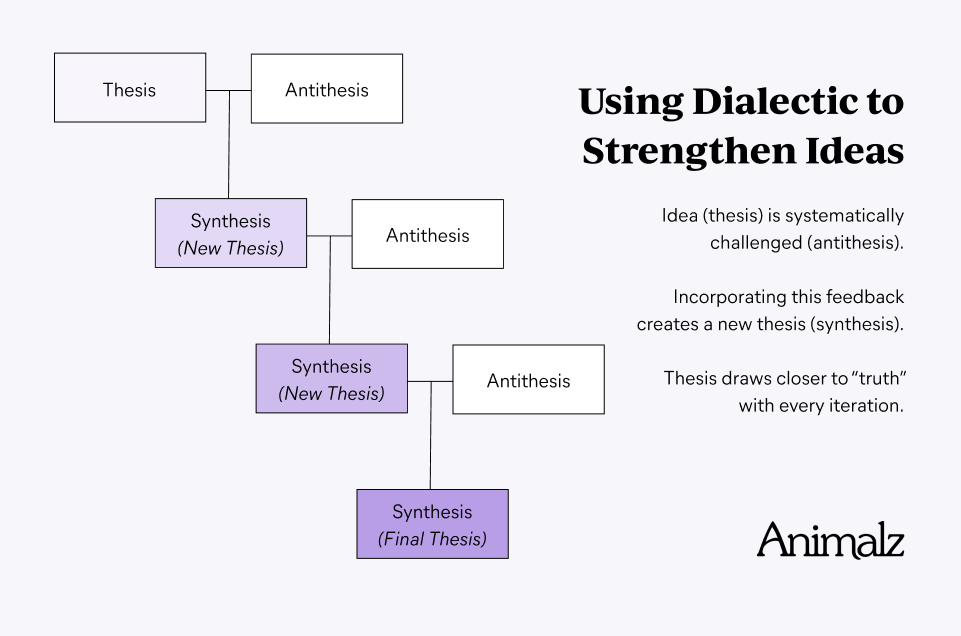
The Second Mover Advantage in Content Marketing - Animalz
The Second Mover Advantage in Content Marketing
Look for the North Star on a cloudless night and you’ll see a picture of the universe from 323 years ago. From that picture, we can learn little about the North Star as it looks today. We can see only a snapshot of how it looked in the past.
The same is true in content marketing. Opening a page of search results is like gazing into the night sky: you’re staring years into the past. We can learn relatively little about what works today; we can see only the strategies that worked five or even ten years ago.
Case in point: you’ve probably noticed that a lot of top-ranking content is, surprisingly, pretty bad.
For all the talk of how “competitive” content marketing has become, the best-performing articles (at least in terms of traffic and rankings) are often mediocre—they are plainly written and formulaic and lack original insight. Today, you’d hand this content back to your writer and ask for a revision.
The reason these articles were so effective is simple: they had a first-mover advantage. Many of today’s SEO powerhouses were simply the first to adopt content marketing. They were just early enough that mediocre content was relatively good. Early enough to build a moat of links, rankings, and brand recognition.
Today, it’s not their quality that keeps them sitting pretty at #1—it’s their legacy.
You Can’t Copy HubSpot and Get the Same Results
Many companies look to these top-ranking posts for inspiration and inadvertently base their strategy on the tactics that worked five years ago. But today, these tactics don’t work the way they used to:
- There’s more competition. When content juggernauts like Close and HubSpot started blogging (in 2013 for Close, and over a decade ago for HubSpot), content marketing was a greenfield: barely a handful of companies had clocked on to its potential. Today, almost every high-volume keyword is already contested by a first mover with more blog posts, backlinks, and brand recognition than you.
- Readers expect more. The types of content pioneered by these first movers—ultimate guides and sprawling listicles—are now overused almost to the point of irrelevance. What was once a differentiator has become expectation, and most search results are already crowded with copycat content.
- The business model has changed. First movers made a priority of ranking for the highest volume keywords, but terms like “content marketing” or “sales quota” bias toward unqualified prospects, junior employees, job seekers—everyone but the leaders and executives who often make purchasing decisions.
This creates a vicious cycle: low conversion rates require huge volumes of traffic to fill their sales pipeline, diminishing returns set in as people become more accustomed to content marketing, and continued growth requires ever more traffic.
In the early, low-competition days of content marketing, this was a viable strategy. Today, it’s not.
The HubSpots and Closes of the world are the handiest examples of content marketing success, but for a company starting content marketing today, they’re also the worst. To be successful, you can’t follow in the footsteps of the first movers. You have to instead embrace the role of the second mover.
The Second Mover Advantage
The second mover advantage is the ability to take stock of everything that’s come before and engineer a new strategy designed explicitly to attack the Achilles' heel of incumbents.
Today, Google Search is the dominant player in the search engine market. But instead of cloning Google’s approach, competitors like DuckDuckGo, Yandex, and Ecosia have embraced the second mover advantage, taking stock of Google’s strengths and weaknesses and differentiating in key areas: privacy, environmental impact, and non-English-language search, respectively.
Instead of trying to emulate the strategy of first movers, content marketers today need to home in on the nuance that other companies aren’t getting right. Instead of targeting the biggest keywords and building huge mountains of unqualified traffic, modern content marketing has to prioritize qualified traffic above all else.
Troops, the revenue communications platform, is an example of the second mover strategy in action.
The search results for most “sales” keywords are contested by a handful of first-mover companies, like Close and Gong. But instead of emulating these giants, every facet of Troops’ approach to content marketing is designed to be strong where the first movers are weak.
Take the Opportunities the First Movers Won’t
The first mover mantra of “go big or go home” has permeated much of content marketing, and many companies dismiss low-volume keywords as worthless. For a first mover, that’s probably true—they need huge volumes of traffic to fuel their furnaces. But as a second mover, you don’t have the same rigid traffic requirements that the big players do.
Companies like Close and Gong slug it out over high-volume, low-intent keywords such as “email template” (8,000 monthly search volume, 72/100 keyword difficulty) and “cold email”(2,800 MSV, 60 KD).
A second mover like Troops can be smarter, targeting long-tail keywords such as the sales qualification framework “meddpicc” (350 MSV, 0 KD) or the common sales shorthand “single threaded”(100 MSV, 6 KD). Lower traffic is offset with much greater relevance to their target audience—sales leaders and managers.
Share Expertise, Not Definitions
The drive to rank for the highest-volume keywords forces first movers to write simplistic content. But basic how-tos, definition articles, and roundups of resources do little to engage the real decision-makers: the senior execs and team leads. In the worst-case scenario, they actively alienate them (how many sales leaders Google “cold calling tips”?).
The archives of first movers are usually littered with articles that were written without any expert input, like “What Is a Discovery Call in Sales? ” and “36 B2B cold-calling tips for sales success in 2019.” Troops does the harder, better thing and shares expertise and opinion.
An article like Why Your MEDDIC Implementation Will Fail (and What to Do About It) is written from the first-hand perspective of somebody who has actually implemented MEDDIC; How Troops helped Stack Overflow cut deal approval times by 93% laces an otherwise generic topic—accelerating deal approval—with a real-world customer story.
Find Your Own Style and Stick to It
It’s easy to assume that the style of content marketing that defines first movers is worth emulating. A great example is the brash, “no BS” tone we’ve come to associate with sales blogs (the following are real examples plucked from top-ranking blogs):
- “That's why I call them the seven deadly closing sins—because they're killing your sales!”
- “(Psst… we have a checklist of discovery call prep tips in this free, downloadable cheat sheet )”
- “But even if you don't have ethical concerns, there are selfish reasons why you shouldn't sell to the wrong customers.”
Many new entrants assume that this style of writing is a prerequisite of success. But, in reality, the type of brand voice that helped Close and Gong stand out in the old world of stuffy corporate marketing is overused today.
Second movers can and should create content that looks and sounds different from anything that’s come before it. In the case of Troops, that means content that feels more like conversation between experienced peers, and less like a “sales hacker” talking down to a fresh-faced account executive.
Seek Opportunity, Not Inspiration
The fundamental mistake many companies make is assuming that the strategies used by content marketing’s earliest adopters still work flawlessly today. They don’t.
Content marketing today is radically different from five or ten year ago. The strategy that HubSpot used to gain domination is not the same strategy that will help a new company, a decade later, achieve the same goal—a fact that the search results rarely disclose.
If you’re embarking on a content marketing strategy today, don’t look to the HubSpots and Closes of the world for inspiration—instead, look to them for opportunity. Write the blog posts they won’t. Target the keywords they deem too “low volume” to go after. Share opinions and expertise, and eschew definitions and run-of-the-mill listicles. Find a style that’s all your own.
Don’t regret that you’re too late to be a first mover—be excited that you’re just in time to be a second mover.









